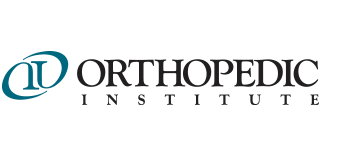Getting Back in the Game

Molly is still in high school and hasn’t achieved recognition on a national stage. But here, in Sioux Falls, she’s a star.
Molly anchored the defense for the O’Gorman’s Lady Knights soccer team that was so dominating that this year they gave up just six goals the entire season. And, no surprise, they won the state championship.
Molly was a big reason for the championship. Need proof? Had Molly not been injured, it’s entirely possible O’Gorman could have won last year, too. It was in the state semi-finals that she tore her ACL, aka anterior cruciate ligament, and the Lady Knights fell short of the state championship.
Molly wanted to get back into action as quickly as possible. She and her parents wondered who to call. “Tons of people told us Dr. Looby was the best,” Molly said, referring to Peter A. Looby, an orthopedic surgeon with Orthopedic Institute.
And with good reason. Dr. Looby completed his Fellowship in Sports Medicine at Harvard and, while there, was team orthopedic surgeon for the Bruins (hockey), the Revolution (soccer) and for the New England Patriots. Looby knows how to help athletes get back in the game.
“One thing striking about NFL quality athletes is their ability to heal,” said Dr. Looby. “They are incredibly motivated. They get injured Sunday, you treat them Monday, they play next Sunday.”
The athlete’s motivation and Dr. Looby’s care got them ready. It was this level of care Dr. Looby provided to Molly. “I was trained to handle elite athletes,” said Dr. Looby. “I apply this training to all athletes whether they are training for the pros or they are weekend warriors.”

Although it might seem strange, tearing her ACL turned out to be a great, even life changing, experience for Molly. Consider: where does Molly go from here? Does she want to play at the next level? Qualify for the national team?
No, Molly wants to hit the books. So inspired was she by her experience with Dr. Looby and Orthopedic Institute that she’s now thinking about a career in sports medicine—something that touched Dr. Looby’s heart.
“It’s hard to imagine there could be any higher accolade,” Dr. Looby said.

 By any measure, Dee Larson and her husband Dale lived a pretty good life. Dee was an executive assistant. Dale was a pharmacist. With two grown children, doing very nicely in distant cities, Dee and Dale regularly played golf together. When they weren’t golfing or socializing, they traveled to warm and sunny places on land and enjoyed the occasional cruise.
By any measure, Dee Larson and her husband Dale lived a pretty good life. Dee was an executive assistant. Dale was a pharmacist. With two grown children, doing very nicely in distant cities, Dee and Dale regularly played golf together. When they weren’t golfing or socializing, they traveled to warm and sunny places on land and enjoyed the occasional cruise.